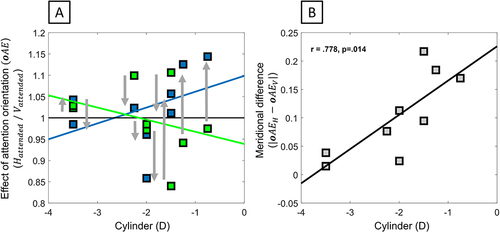Figures & data
Table 1 Characteristics of Subjects
Figure 1 The temporal structure of the study. The sequence of the stimulation started with the presentation of a high contrast pulsed cross adaptor, used to direct the attention of the subject along the vertical or the horizontal at the beginning of the test and just before the presentation of the visual target. The visual target, an annulus Gabor either vertical (V) or horizontal (H), is used to determine resolution acuity under the meridional attention manipulation.
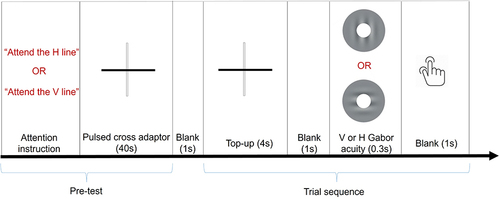
Figure 2 Adaptor effect. Effect of the adaptor on horizontal (H) and vertical (V) resolution acuity for each subject. In all the figures, the error bar corresponds to the standard error.
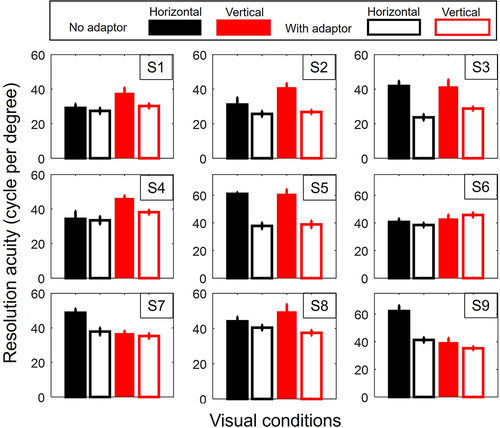
Figure 3 Foveal meridional anisotropy (fVHA) of performance. (fVHA) when congruently attending to the orientation of targets as a function of the amount of sphere for (A) resolution acuity and (B) RTs. As the amount of defocus increased, a relative increase in vertical performance was observed as compared to the horizontal.
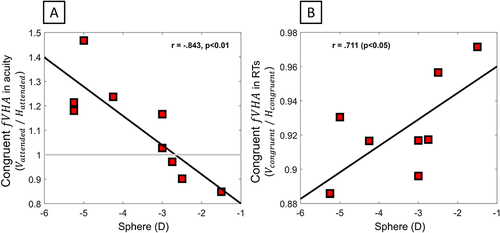
Figure 4 Effect of attention congruency on (fVHA). (A) Attention-related modulation of meridional asymmetry for RTs and acuity in subjects with sphere <−2.50D. (B) Attention-related modulation of meridional asymmetry in acuity as a function of sphere. *P < 0.05.
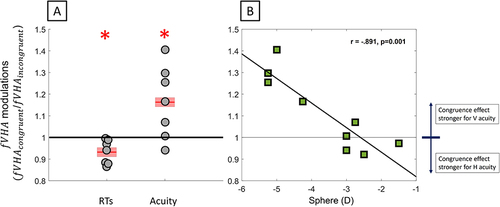
Figure 5 Congruency-related attentional modulation of RTs. Change in RTs was associated with switching attention from the congruent to the incongruent meridian for horizontal, vertical or both target orientations. The grey dots indicate the individual attention effect on RT values for each target meridian; the red bars indicate the mean value; the shaded areas represent one standard error. *P < 0.05, ns not significant.
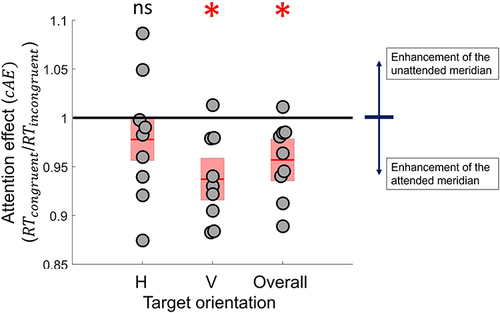
Figure 6 Congruency-related attentional modulation of resolution acuity. (A) Change in resolution acuity associated with switching attention from the congruent to the incongruent meridian for horizontal to vertical. (B) Magnitude of the congruence-related attention modulation as a function of astigmatism.
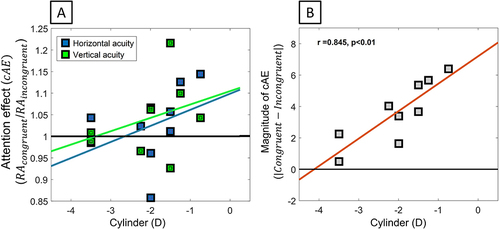
Figure 7 Meridional asymmetry of congruence-related attention. (A) Attention-related modulation of meridional asymmetry for RTs and acuity in subjects with sphere <−2.50D. (B) Attention-related modulation of meridional asymmetry in acuity as a function of sphere. *P < 0.05, ns not significant.

Figure 8 Orientation-related attentional modulations. (A) Attention-related modulation of meridional asymmetry for RTs and acuity in subject with sphere <−2.50D. (B) Orientation-related attentional modulations in overall acuity as a function of defocus. *P < 0.05, ns not significant.
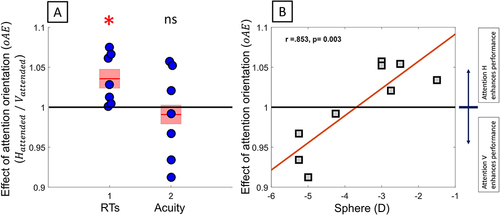
Figure 9 Meridional difference in orientation-related attentional modulations. (A) Orientation-related attentional modulations of vertical and horizontal acuity. (B) Magnitude of the difference in the orientation-related attentional modulations as a function of astigmatism. The arrows indicate the acuity changes in orientation-related attentional modulations between meridians.
